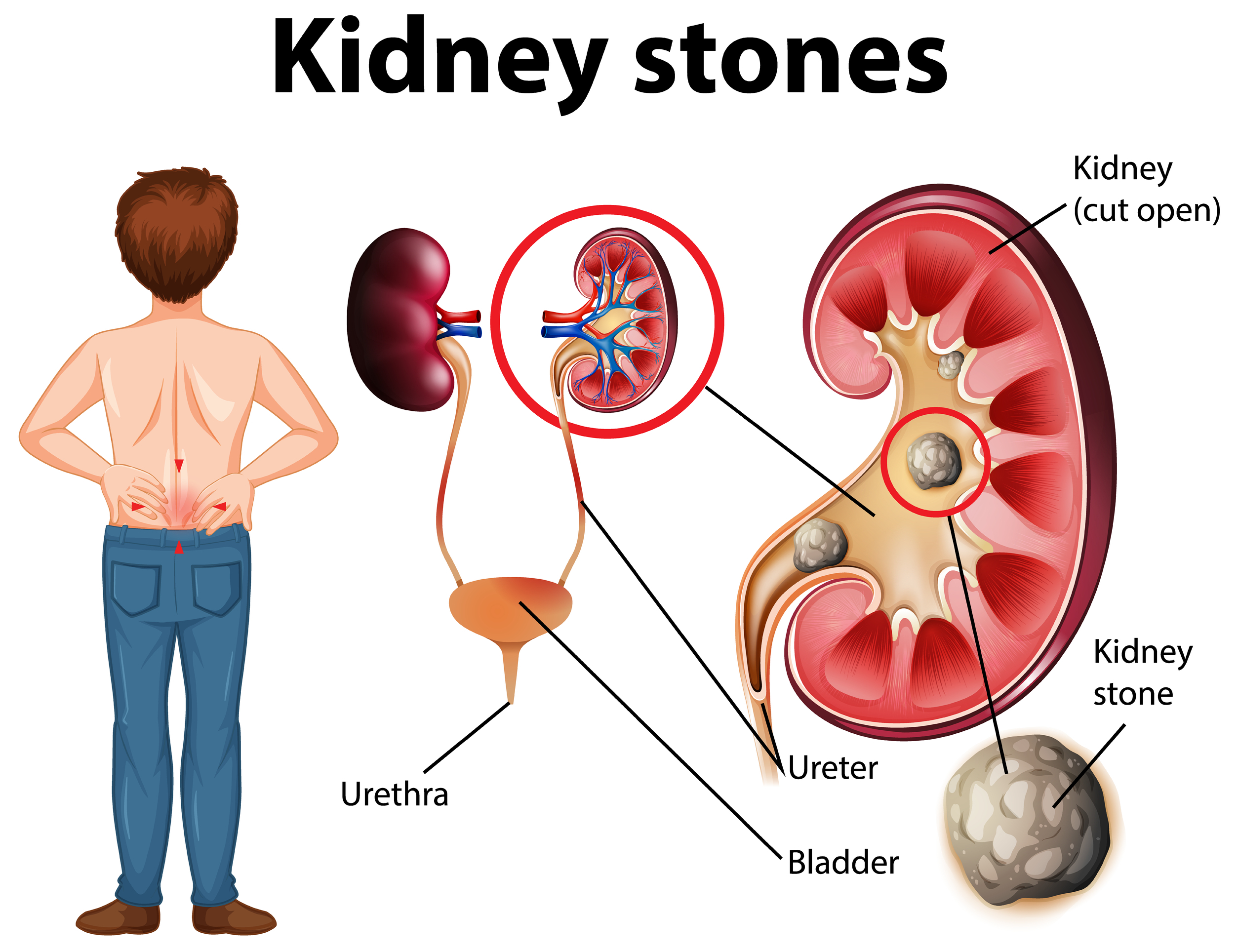Kidney Stones
Overview: Kidney stones are hard deposits that form in the kidneys when certain substances in the urine, such as calcium, oxalate, and phosphorus, become highly concentrated. These stones can vary in size, ranging from as small as a grain of sand to as large as a golf ball. Kidney stones can cause significant pain and discomfort as they pass through the urinary tract.
Overview: Kidney stones are hard deposits that form in the kidneys when certain substances in the urine, such as calcium, oxalate, and phosphorus, become highly concentrated. These stones can vary in size, ranging from as small as a grain of sand to as large as a golf ball. Kidney stones can cause significant pain and discomfort as they pass through the urinary tract.
Causes: Several factors contribute to the formation of kidney stones:
- Dehydration: Insufficient fluid intake can lead to concentrated urine, promoting stone formation.
- Dietary Factors: High intake of certain foods rich in oxalate, calcium, and salt can contribute to stone formation.
- Medical Conditions: Conditions like gout, urinary tract infections, and certain metabolic disorders can increase the risk.
- Family History: A genetic predisposition may contribute to kidney stone formation.
Types of Kidney Stones: Different types of kidney stones can form based on their composition:
- Calcium Stones: The most common type, primarily composed of calcium oxalate or calcium phosphate.
- Struvite Stones: Formed in response to urinary tract infections, often in conjunction with certain bacteria.
- Uric Acid Stones: Result from high levels of uric acid in the urine, often associated with conditions like gout.
- Cystine Stones: A rare type caused by a genetic disorder leading to excessive cystine in the urine.
Symptoms: Kidney stones may not cause symptoms until they begin to move within the urinary tract. Common symptoms include:
- Severe Pain: Intense pain in the back or side, often radiating to the lower abdomen and groin.
- Hematuria: Blood in the urine, giving it a pink or reddish color.
- Frequent Urination: Urgency to urinate more often.
- Painful Urination: Discomfort or pain during urination.
- Cloudy or Foul-Smelling Urine: Changes in urine appearance or odor.
- Nausea and Vomiting: Associated with severe pain.
Diagnosis: Diagnostic tests may include imaging studies (CT scan, X-ray, ultrasound) and urine analysis to determine the presence and composition of kidney stones.
Prevention: To reduce the risk of kidney stones:
- Stay Hydrated: Maintain adequate fluid intake.
- Dietary Changes: Limit intake of oxalate-rich foods and reduce sodium.
- Calcium Intake: Consume an adequate amount of dietary calcium.
Medical Management: Undergo regular follow-ups and medical evaluations for individuals at risk.

